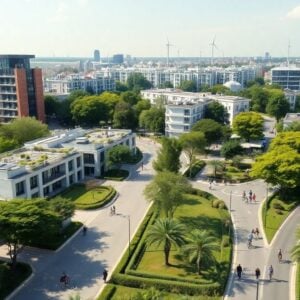The United States has introduced new visa regulations that significantly complicate the application process for Indian students and visitors. Effective immediately, the Department of State (DoS) directive mandates that non-immigrant visas, including those for students (F1), visitors (B1/B2), and employment (H-1B, O-1), can only be applied for in the applicant’s country of citizenship or residence. This change impacts Indians who had been applying for visas overseas to circumvent lengthy wait times in India.
Key Takeaways
- Indian citizens and residents must now apply for US non-immigrant visas exclusively within India.
- This new rule affects student, visitor, and certain employment visas.
- Applicants who had initiated applications in third countries may need to reapply in India, incurring additional costs.
- The move comes amid already strained US visa processing and long wait times.
New Restrictions on Visa Applications
The Department of State’s directive, issued on September 6, ends the practice of applying for certain US visas in countries other than one’s home nation. Previously, many Indians utilized this flexibility to bypass the extensive interview waitlists prevalent in India. This included applying from countries like Vietnam, Thailand, and various European nations, often combining visa applications with travel.
Impact on Indian Applicants
This policy shift presents a significant challenge for Indian nationals, who represent a substantial portion of US visa recipients. The US visa application process has been increasingly stringent since 2025, marked by rising denial rates and prolonged wait times. The latest mandate exacerbates these difficulties, particularly for students seeking to pursue education in the US and individuals planning short-term visits.
Rachit Agarwal, founder of overseas education startup AdmitKard, noted that securing visa slots has been difficult since June, and applying in other regions was a workaround. Gnanamookan Senthurjoti, founder of The Visa Code, highlighted that many individuals who had applied for student or visitor visas abroad will now have to reapply in India. This often means forfeiting application fees and starting the process anew.
Addressing Long Wait Times
The flexibility to apply in third countries was initially introduced during the COVID-19 pandemic to help manage backlogs. However, with the DoS now removing this option, applicants face the prospect of significantly longer waits within India. For student visas (F-1), slots have been limited and quickly booked since June. Similarly, B1/B2 visitor visas have also seen extended processing times, making third-country applications an attractive, albeit costly, alternative for many.
Joel Yanovich, an attorney at Murthy Law Firm, confirmed that third-country processing was a common strategy due to wait times in India, provided applicants could legally enter those countries. This option is now unavailable, forcing many to restart their applications in India, which involves paying fees again as they are non-transferable.
Sources
- Beyond tariffs: US creates new visa hurdles for Indian students, visitors, The Economic Times.







